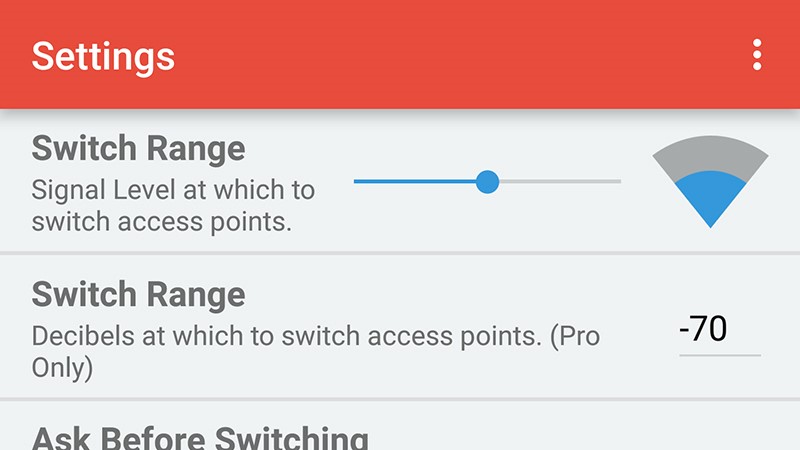
With the amount of traveling we do in the hyper-connected, globalized 21st century, Wi-Fi connectivity in the developed world is no longer considered a privilege but an expectation. Although coverage areas have drastically expanded, the technology remains subject to the same old constraints: range and throughput. When it comes to identifying the optimal Wi-Fi signal, phones aren’t always as smart as we’d expect. Fortunately, there are a variety of ways to fix that.
Android
1.) By default, Android phones remain connected to the current network until the signal dies completely before switching to a closer alternative — which, by the way, won’t necessarily be the next best network. To take direct control over which networks the phone links to, install the Wi-Fi Switcher app .
The app enables users to establish a “preferred” list of routers that should take priority or set a custom signal strength threshold that needs crossing before the device switches to a new network — a useful feature when within the range of multiple access points. Other features allow mobile to automatically turn off when stepping outside network range or jumping from 5 GHz to 2.4 GHz bands on the same router.

2.) Navigating the app is straightforward from a UX design point of view; simply tick the “preferred” box next to any Wi-Fi network you want the device to remember. But if Wi-Fi Switcher doesn’t appeal to your sensibilities or the particular network setup at your home, office, or local hangout, don’t be afraid to experiment. Other useful Wi-Fi management apps on Android include Swifi Auto Switch and Best Wifi.
Apple
iPhones and iPads use a variety of criteria when evaluating network connections, including the network’s security settings and hotspot type. The default settings don’t allow you to specify a “preferred” network, but here are a number of solutions you can try, although none automatically detect signal strength.
1.) Begin by installing WiFi Priority , a slightly less user-friendly app than its Android compatriots, but one that performs nearly the same features. It lets you disable auto-join on certain networks, prioritizing the alternatives whenever iOS tries to connect. At the same time, you can still connect to any other network with a tap.
2.) Another useful — but far more complex — solution has you install Apple Configurator 2 on your Mac and create a customized iPhone profile from there. The settings you’ll need to alter are hidden by default and require tampering with the iOS’s Apple Configurator app available on the App Store on a Mac. Check out How-To-Geek’s tutorial on how to access these settings.
3.) A second useful tip comes from Nick Heer over at Pixel Envy, who suggests that any Wi-Fi preferences you set up on the MacOS will automatically sync across iCloud to iOS devices using the same Apple ID. While it may not work for everyone, the approach allows you to prioritize networks through System Preferences on your Mac, although it may force you to reset your network settings first.
Source: Gizmodo
Advertisement
Learn more about Electronic Products Magazine





